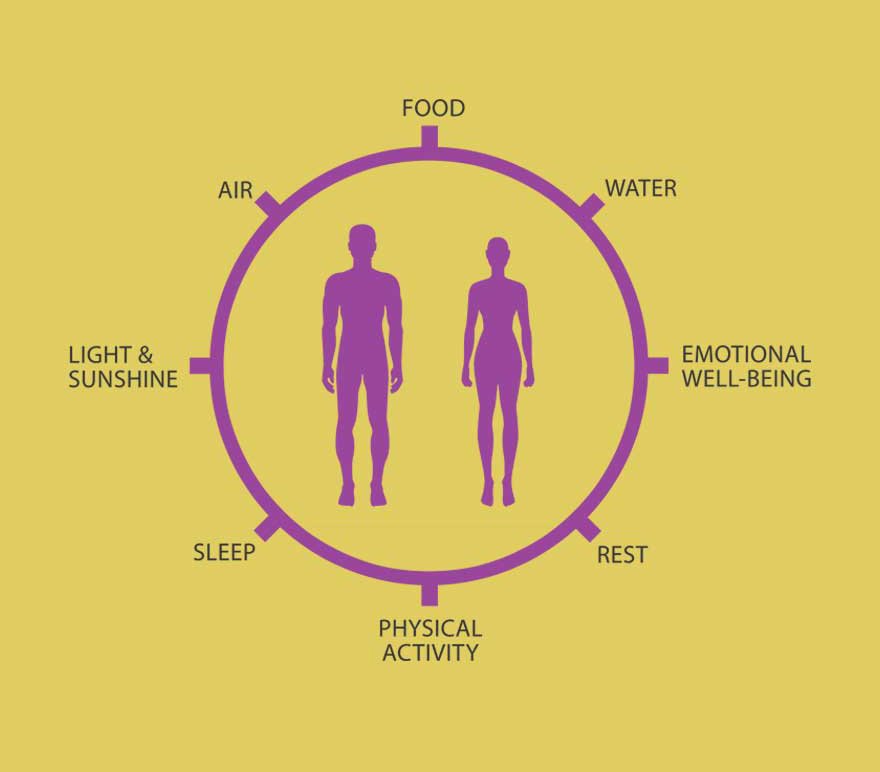Natural Hygiene
Natural Hygiene is the study of Science of Health. It is further defined as the Science and Art of restoring and preserving health by those factors that affect our life directly such as few mentioned below:
- Food we’re designed to eat
- Sufficient Nutrition
- Healthy Water and proper Hydration
- Enough Sunshine
- Restful Sleep
- Adequate Relaxation
- Appropriate amounts of non-injurious physical activity
- Comfortable Environment
- Toxin, Stress, and Misinformation avoidance
- Positive Social Relationships


Natural Hygiene is the scientific application of the principles of Nature in Preservation and Restoration of health.
Natural Hygiene covers the total needs of humans, and not merely a few of their requirements.
It is neither a practice of medicine, a healing art, nor a system of therapeutics. It offers no cures, does not pretend to cure, and in fact strives to dispel the popular notion of cures. Instead, Natural Hygiene emphasizes that, adherence to its principles, which are based on the Laws of Nature, permit the body to heal itself.
WHERE DO THE TERMS HYGIENE AND NATURAL HYGIENE COME FROM?
The word “Hygiene” came from the Greek goddess of health, Hygieia, and the movement
was first named NATURAL HYGIENE in 1800’s.
The inside of your body determines how you look outside in terms of weight, skin, hair, eyes, the glow on your face and much more. Natural Hygiene works on the concept of cleansing your inner body and mind. Ignoring your body literally means jumping into an accident. Your body gets clogged up with toxic material when you start to ignore what you put in your body. This applies to the mind too. The more toxic you are , the sicker you become. Clean body commands a clean mind.
HOW DO WE BECOME TOXIC?
When the elimination process does not take place at the same pace as the consumption of food, we start building up dead material that can be compared to trash bin in your kitchen. This starts to rot and becomes toxic. The other waste we build up if we do not eliminate successfully is the dead cells.
